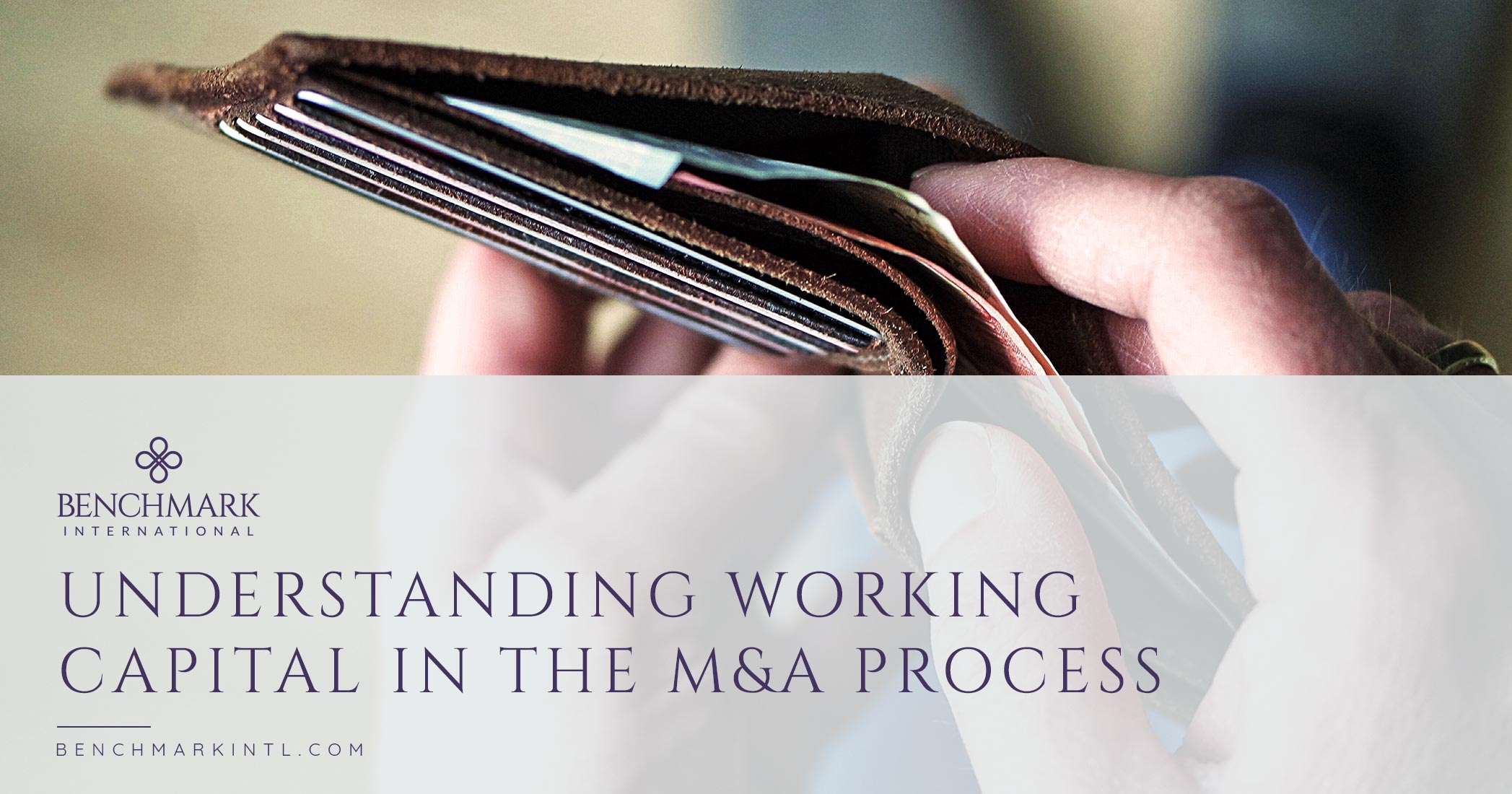What is Working Capital?
In the process of selling your business, it is important to understand working capital as you accept an LOI (Letter of Intent) and move into the due diligence stage. Buyers require the business that they are purchasing to leave a predetermined amount of working capital to continue running the business and cover the short-term obligations.
In simple terms, working capital is calculated by subtracting your company's current assets (excluding cash) from your current liabilities (excluding debt). However, the calculation can become more complex in practice. Typically, in the LOI, the buyer will outline how the working capital “peg” will be calculated. The “peg” is a benchmark amount of working capital that is agreed upon toward the end of due diligence by the buyer and seller. The buyer typically considers current assets to include items such as accounts receivable, inventory, and prepaid expenses as necessary to maintain the ongoing operations. Items such as lines of credit, short-term debt, and taxes are not included in this calculation.
How Does Working Capital Influence the M&A Process?
When buyers are reviewing your company for potential acquisition, they want to ensure liquidity once they take over. The minimum level of working capital is considered to be part of the valuation and accounted for in the price included in the LOI. It is important to note that most M&A transactions are set on a cash-free and debt-free basis, meaning the seller maintains cash in the business but is responsible for paying off bank debts.
The working capital analysis is typically part of the buyer’s diligence process, which will involve the analysis of balances at the account level. Some items under the accrued expense or accounts payable may not be operational in nature and therefore are excluded from the calculation. However, the buyer may determine that an item was improperly omitted from the balance sheet and they may adjust the balances. The primary reason for this analysis is to accurately determine what a true normalized level of working capital should be given the company's historical financials.
How Are Working Capital Targets Determined?
In most cases, the buyer will use a historical average, which is typically 12 months to calculate the appropriate target at closing. The reason is that the buyer will be basing their valuation on the revenue, EBITDA, and working capital needed to generate this income will need to be provided. As a seller, it is important to remember that your EBITDA will typically reflect account receivables as revenue and account payables as an expense. The 12-month period for working capital is used to average out potential fluctuations as this correlates to valuations, which are typically based on a multiple of the trailing 12-month EBITDA. Seasonality should also be considered in the calculation. For example, working capital could be much higher or lower depending on if the deal were completed during the peak season. In this case, the buyer would be required to pay more as the working capital would likely be much higher or lower than average. On the other hand, if the transaction were completed during the off-season, working capital would be reduced.

Adjustments During Diligence
As the seller, prior to the closing, you will deliver an estimate of working capital that you believe the business will have at closing. If this estimate exceeds the working capital target, you will receive an amount equal to the excess as an increase in the purchase price. However, if the estimate were less than the working capital target, the buyer would reduce the purchase price. After the closing, the buyer will perform their own calculation to determine the amount of working capital the acquired business had at closing. The purchase price would be further adjusted if the buyer’s calculation differs from the amount of the seller’s estimate. This process is typically referred to as a “true-up.”
Negotiating the Working Capital
During the true-up process, there is sometimes a dispute between the buyer and seller regarding the working capital calculation. From the seller’s point of view, they will argue that working capital should be calculated consistently with the methodology that was used to calculate the working capital target amount. This means that the seller is arguing that the purpose of the working capital adjustment is to compensate for deviations from the target working capital amount. For such changes to be calculated fairly, the closing amount of working capital must be calculated using the same methodology that was used in calculating the working capital target amount.
On the other hand, the buyer will sometimes argue that the purpose of the adjustment is to ensure that the business is delivered at closing with adequate working capital and that it should be made by calculating working capital in accordance with generally accepted accounting principles (GAAP). Both the buyer and seller viewpoints sometimes make their way into the purchase agreement regarding how working capital is to be calculated.
READ MORE >>
 Benchmark International
Benchmark International  Benchmark International
Benchmark International 







